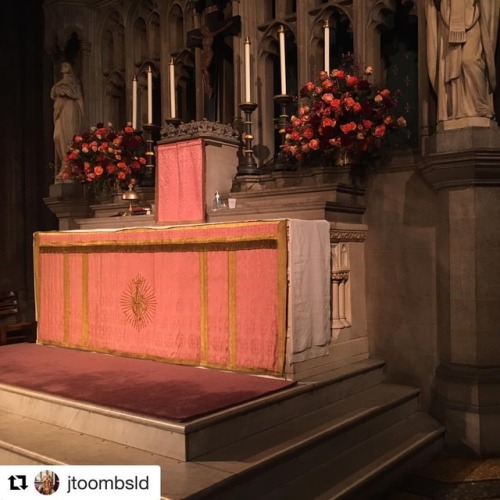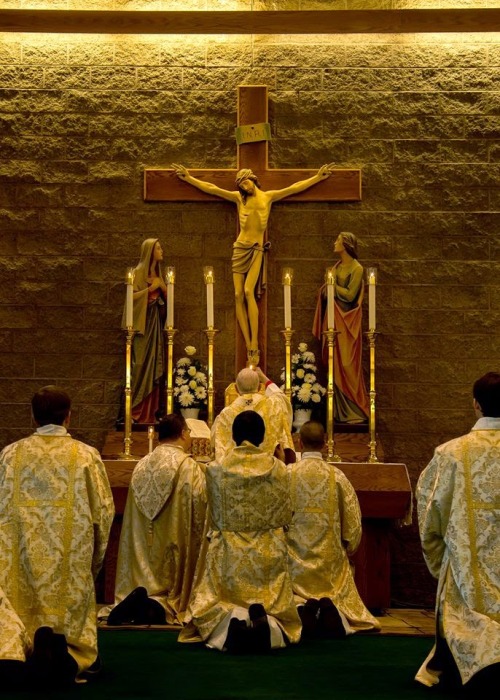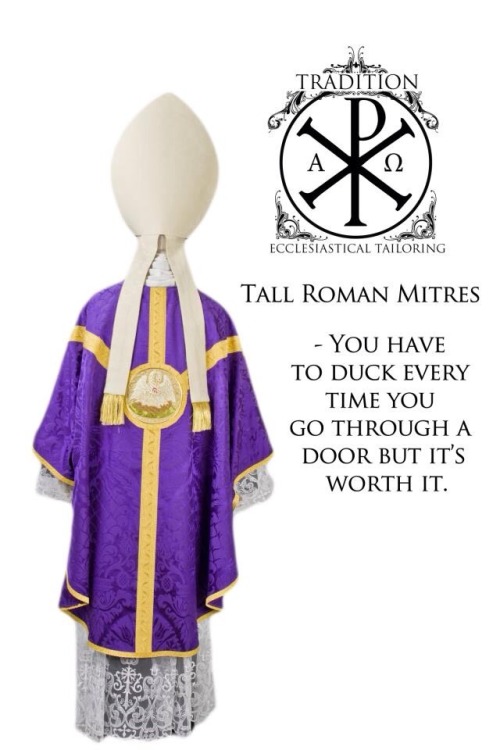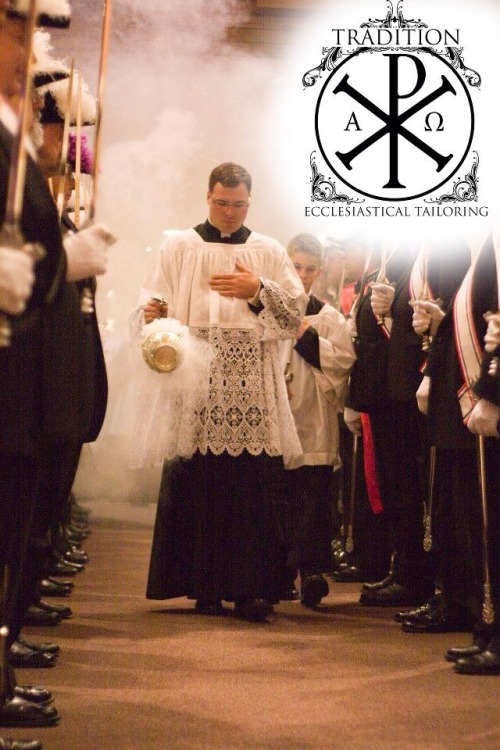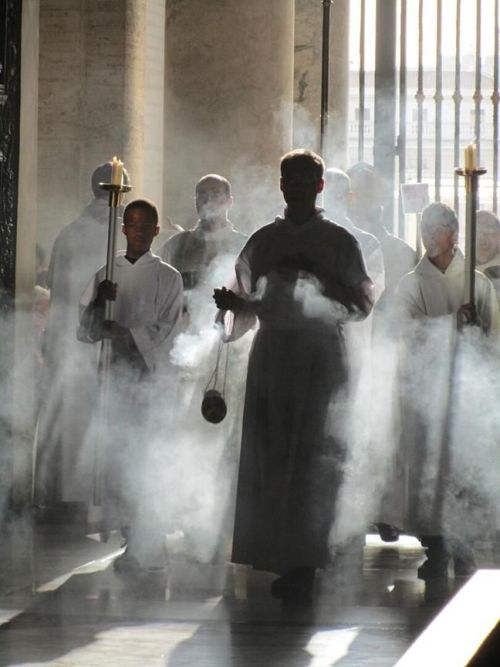#liturgy
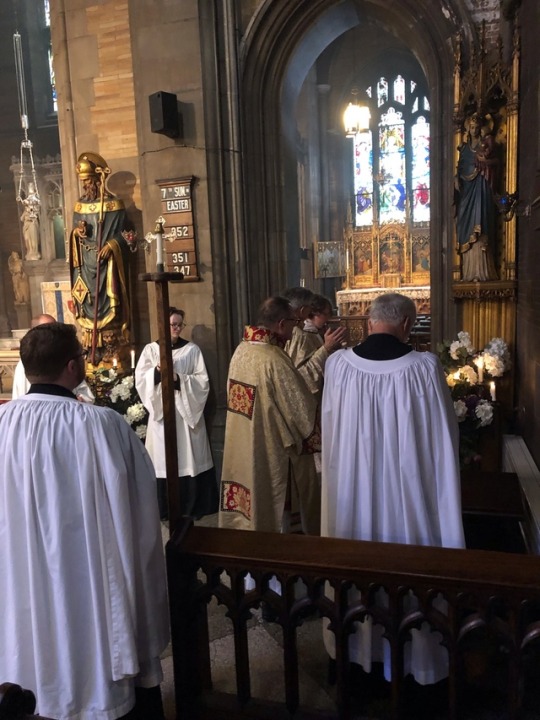
The Regina coeli after the Mass of 7 Easter, sung at the Shrine of Our Lady (2019)

The Rector’s dog at the Rogation Procession (2019)


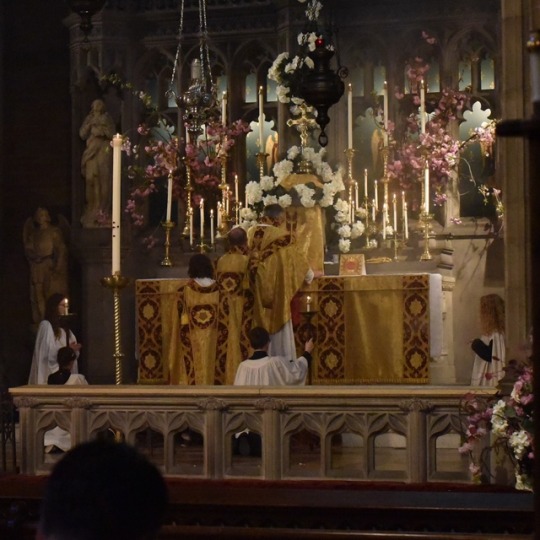
Easter Day (2019)
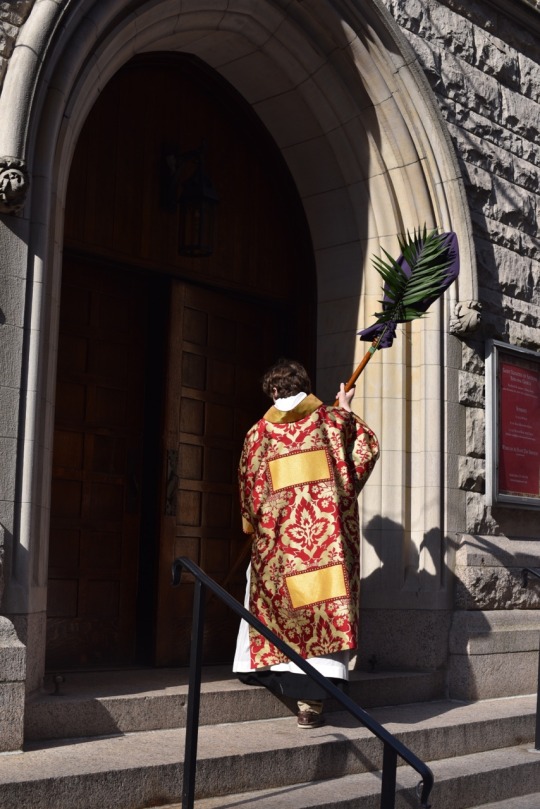
The subdeacon bids the doorkeeper open the doors on Palm Sunday (2019)
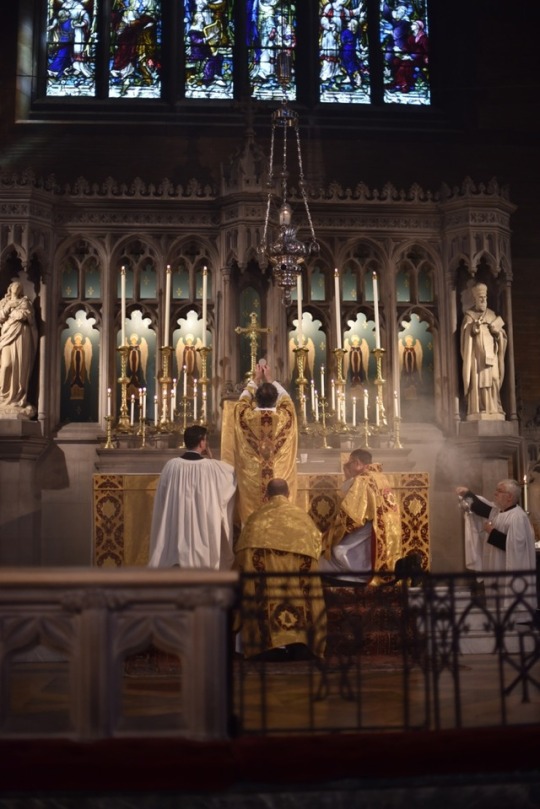
Solemn Mass for All Souls Day
Laetare Sunday. A few shots from Mass, with the ones from the pews by @dvshermannn. Our simnel turned out great! It was a hit, along with the 3 others a we had from our talented parish bakers. #laetare #lent #roses #rosesunday #mass #liturgy #vestments #anglican #catholic #anglocatholic #episcopalchurch #newyorkcity #Repost @jtoombsld (at Saint Ignatius of Antioch Episcopal Church)
Post link
The #Rector in the #sacristy before #mass last night. He is wearing his Lenten Array #chasuble (and you can see the #maniple peaking out) and on the right is the parish’s Lenten Purple #cope both by @wattsandco #Episcopal #AngloCatholic #vestments #liturgy #church #lentenarray #sacristyselfie #behindthescenes (at Saint Ignatius of Antioch Episcopal Church)
Post link
The elevations at today’s 9 am Sung Mass. We welcomed newly ordained deacon the Rev’d Mark Schultz as our preacher at all our Sunday masses. #Episcopal #AngloCatholic #mass #liturgy #church #Eucharist #deacon #priest #NYC #NewYorkCity #UpperWestSide #altar (at Saint Ignatius of Antioch Episcopal Church)
Post link
Some images from Mark Schultz’s #ordination today to the #deaconate by Bishop Glasspool @stjohndivinenyc #Episcopal #church #deacon #liturgy #mass #NYC #NewYorkCity #MorningsideHeights (at Cathedral of St. John the Divine, NYC)
Post link
Please join us Friday evenings at 6:30 during Lent for our liturgy of Stations of the Cross and Benediction of the Blessed Sacrament. Here the high altar is vested for Lent with a frontal made for us by @wattsandco (with restored embroideries from our historic vestments) and black and gold wood polychrome candlesticks made for us by @davisdambly #Episcopal #AngloCatholic #church #altar #liturgy #vestments #altarfrontal #candles #candlesticks #sculpture #CharlesCoolidgeHaight #architecture #churcharchitecture #Lent (at Saint Ignatius of Antioch Episcopal Church)
Post link
Pontifical Mass at the Throne, Albuquerque, NM
Source: http://www.newliturgicalmovement.org/2014/07/pontifical-mass-at-throne-albuquerque-nm.html#.U7_yrVYeXfM
Post link
HOMILY for Maundy Thursday
Ex 12:1-8, 11-14; Ps 116; 1 Cor 11:23-26; Jn 13:1-15

“Father, why is this night different from other nights?” According to Jewish tradition, this was the question that the youngest child would ask his elders on Passover night, in the middle of their meal. And then his father would tell the story of Israel’s salvation, and recall the account from Exodus that was read to us tonight, how God saved the people of Israel by passing over the houses of the Jewish people, which they had marked the lintels with the blood of the sacrificed lamb, having carried out the detailed instructions given to them concerning the selection of the “lamb without blemish”, the time and manner it was to be slaughtered, and then the way it was to be cooked – by being stretched between two wooden sticks so as to be roasted over a fire – and then eaten albeit in haste.
The first Passover, then, wasn’t so much a celebratory meal, although the eating of the roasted lamb was important to complete the ritual action. Rather, it was a ritual sacrifice, thus attention was paid to the selection of the sacrificial lamb, its preparation and so on. At the time of Jesus, things had developed. Now that the annual Passover commemoration was being celebrated in the Promised Land (and not in Egypt), so the chosen lamb had to be brought to the Temple, which was on Mount Sion, and it had to be sacrificed in the Temple by the priests. They then had to eat the lamb, but not in their own home as such: You had to eat it in the city of Jerusalem so if you weren’t a local resident you either rented a room for your Passover meal, or went to the house of a friend or benefactor who lived in Jerusalem. And this is what Jesus did: it is believed that the Upper Room in Jerusalem where he celebrated the Last Supper probably belonged to the family of St Mark the evangelist, or Nicodemus.
However, we’re so accustomed to calling this the Last Supper or the Lord’s Supper that we’ve becoming used to thinking of the Passover as being principally a meal. However that is not how Scripture understands it. The book of Deuteronomy, for example, refers to it as the “Passover sacrifice”. And nobody who was in Jerusalem on the days of preparation could have ignored this fact. For according to the historian Josephus over two hundred thousand lambs were slain for the Passover in Jerusalem; the Temple would basically become like an abattoir, and the priests were like butchers carrying out this specialised ritual act of sacrifice. The sacrificial aspect of the Passover, therefore, predominates in the mind of the Jewish people, and so Jesus thus speaks of his own death of Calvary in a sacrificial manner, and from the very beginning of St John’s Gospel, Christ is highlighted as the Passover lamb, perfect and unblemished, and he is taken to Calvary at the very hour that the lambs are being sacrificed in the Temple. St Paul, therefore, would later write that “Christ our Passover lamb has been sacrificed.” (1 Cor 5:7)
So, we might ask tonight: “Why is this meal different from other meals?” and the answer is that the Passover was no ordinary meal – this was not just a community meal or like any other convivial family gathering. The Passover was a liturgical action, a ritual sacrifice which, as we heard in the reading from Exodus, was to be solemnly commemorated every year so that God’s people could remember their deliverance from death in Egypt and also from slavery to Pharaoh. The Passover, therefore, celebrated the liberation of God’s people from ancient tyrants including Death itself. It was within the context of the Passover, then, that Jesus takes up these Jewish understandings of the Passover, and then, as the long-awaited Messiah, he transforms them and inaugurates a new Passover, a new Exodus, a new Covenant.
With all this background, then, we can now ask: “Why is this Passover that Christ celebrated the night before he died different from other Passovers?” Firstly, it seems that the apostles did not go to the Temple to offer the sacrificial lamb. Rather, they gathered for the Passover in the Upper Room, and then Jesus declares himself to be the true sacrifice, the definitive Passover Lamb. The way he does this is by declaring the bread and wine to be his Body and Blood so that the focus of the meal is not the body of a lamb that had been slain in the Temple but rather his Body, his Blood which was to be poured out in sacrifice, slain on the Altar of the Cross the next day. Christ is saying, in effect, “I am the new Passover lamb of the new Exodus. This is the Passover of the Messiah, and I am the new sacrifice.”
He then commands his apostles to “Do this as a memorial of me”, as St Paul recounts in the second reading. This deliberately echoes the command of God in Exodus to celebrate the Passover as a memorial in honour of God and his saving work. So, now, Christ commands that the new Passover be celebrated in memory of Christ who has rescued us from the tyranny of sin and from eternal death through his Sacrifice on the Cross. The new Passover, which we call the Mass or the Eucharist, is that ritual sacrifice, that liturgical action commanded by Christ on this night to remember the saving and redeeming and liberating sacrifice of Christ on the Cross. Hence St Paul says: “Every time you eat this bread and drink this cup, you are proclaiming his death.” And it is by Christ’s death that you and I, we Christians, have been liberated from the tyranny of Death itself.
Therefore, we might ask: “Why is the Mass, at which we eat and drink, different from all other meals?” What is actually happening in the Mass which was instituted by Christ on this night? The answer is that, like the Passover of the Old Covenant, so the Passover of the New Covenant, our familial bond with God that has been ratified by the Blood of Christ, is no mere family meal. Rather, it is first of all a ritual sacrifice, which is why we rightly speak of the Holy Sacrifice of the Mass. This is also why we do not just gather around a table for the Mass but, more properly, we go up to the Altar, which means the high place, where the Sacrificial Lamb of God is offered and immolated. So, later on, by going up to the High Altar, it is like going up Mount Sion to the Temple, where, at the Altar, the Priest offers Christ, the true Passover Lamb to God. Then, at Holy Communion, the Lamb that has been offered in sacrifice is brought from the Altar, as if from the Temple, and given to the people and it is eaten, not in your own homes, but here within the church, that is to say, within the walls of the new Jerusalem. As such, we can see that what we do in this Mass and in every Mass is rooted in the ritual sacrifice of the Jewish Passover, but also transformed and renewed by Jesus Christ.
For the biggest difference is the fact that the sacrificial Lamb is present and is eaten but the Lamb is hidden under the appearances of bread and wine; Christ is truly and substantially present though under these sacramental forms. Why? St Thomas Aquinas suggests that Christ does this to mercifully spare us the shock and horror of seeing his bloody death on the Cross every time we come to Mass. Nevertheless, lest we forget and fall into the trap of thinking that the Mass is just a community gathering to celebrate our faith, or that we gather mainly for a service of the Word, the Council of Trent states plainly: “that same [Jesus] Christ who once offered Himself in a bloody manner on the altar of the cross is [now] contained and immolated in an unbloody manner” on the altar of the Holy Mass.
Finally, we might ask: Why is bread and wine offered? Unleavened bread was already part of the first Passover, and as Christ says in John 6, it is also a reminder of the manna from heaven which was kept in the Holy of Holies of the Temple, and of the mysterious Bread of the Presence that was offered in sacrifice in the Temple. Wine came to be included as part of the Passover ritual, and by the time of Christ, four cups of wine were drunk at important points in the Passover ceremonial. But intriguingly, Christ does not drink the fourth cup during the Passover meal. Rather, he delays it until his final moments on the Cross. Then, St John says, “When Jesus had received the wine, he said: ‘It is accomplished’”. By doing this, Christ links his Sacrifice on the Cross, which accomplished the salvation of the world, liberating all humanity from sin and death, to the new Passover at which he inaugurated the Sacrifice of the Mass. Therefore, whenever we come to Mass, and whenever we eat and drink his Body and Blood in Holy Communion, we fulfill Christ’s command to remember his saving death that has opened the way to eternal life for us.
How wonderful is this holy Sacrifice of the Mass, this “sacred banquet in which Christ is received, the memory of His Passion is renewed, the mind is filled with grace, and a pledge of future glory is given to us.” Truly as the Gospel says, through the Mass and everything he did on this night, Christ “showed how perfect his love was”, and he gives us the means, the Eucharist, to empower us to love others as he has loved us.
HOMILY for Septuagesima Sunday (Dominican rite)
1 Cor 9:24-27;10:1-5; Matthew 20:1-16

Today, in the ancient calendar of the Church, is Septuagesima Sunday, which (as the name indicates) nominally marks 70 days before Easter, and it also marks the start of a short liturgical season known as pre-Lent, a run up to the forty days of Lent which begins in 17 days time, but which already anticipates Lent with the suppression of the ‘Gloria’ and the ’Alleluia’, and the adoption of penitential violet vestments, although fasting, which is proper to the holy season of Lent, is not yet upon us.
Rather, this period of Septuagesima calls us to prepare for Lent by examining our consciences, by recalling that we shall all be called to judgement, summoned on the Last Day to account for our deeds before God. For the number 70 in Scripture is sometimes thought to signify a period of judgement, a time for the execution of God’s justice in which he shall chastise and teach his people. Hence the people of Israel were exiled from the Promised Land and held captive in Babylon for 70 years. Hence after the deluge and scores of days of rain, Noah and his family in the ark waited for about 70 days for the flood waters to abate. And hence Christ sent out 70 disciples into the world to proclaim “The kingdom of God has come near to you” (Lk 10:9) and so to call humanity to be attentive to the imminence of God.
On Septuagesima Sunday, on this seventieth day, therefore, the Church calls us to remember the goodness of God who has repeatedly called his people to repentance, giving them many opportunities to prepare for his final coming as Judge through major cataclysmic events such as the flood and the exile that reminded God’s people of the fragility of life, and of the fundamental insecurity of all our human certitude. If anything at all, our experience of a global pandemic, and the spectre of impending war should at least remind us of this, and so be a call to repentance, to turn to God, to return to him, and to seek him who alone is everlasting. For nothing in creation endures for ever: “Remember that you are dust”, we shall recall on Ash Wednesday. Only God is. Only he, and his truth, his love, his Word endures for ever. St Paul expresses this metaphorically in today’s epistle, saying: “the Rock was Christ.”
Yes, God is the Rock on which we must stand when the flood waters rise; he is the Rock on which to build our lives, so that we are never exiled no matter how far we go from home. For Christ is himself the Kingdom of God proclaimed by the 70, and if we are founded on Christ then we shall find that the Kingdom is not just near to us but indeed, as Christ says later on St Luke’s Gospel, “the Kingdom of God is within you.” (Lk 17:21) In these seventy days, therefore, as we examine our lives, and then as we detach ourselves from money and food through Lenten almsgiving and fasting, we learn to rely less on the things of this world, on created goods, and to turn towards Christ who alone is our Rock, on whom alone we can depend. Thus the Entrance chant declared: “I will love Thee, O Lord, my strength: the Lord is my firmament, my refuge, and my deliverer.” And again, the Gradual sings: “Let them trust in Thee who know Thee: for Thou hast not forsaken them that seek Thee, O Lord.”
The point of this verse from psalm 9 is this: that only those who know the Lord will trust him, and will seek him, and thus they shall not be forsaken by him. Therefore, these days of pre-Lent and Lent, which were traditionally intensive days of final preparation for catechumens who were going to be Baptised and initiated as Christians at the Easter Vigil, are days in which we, like those catechumens, are called to know the Lord more intimately especially through prayer and a prayerful reading of Scripture. For if we do not grow in our knowledge of God now, then when those days of tearful floods come, or when we are exiled from our earthly securities, we shall not know to call upon him, we shall not know to trust him and depend upon him and to say: “my Rock isChrist”!
Therefore the Lord, in his mercy, gives us this time of Septuagesima, these seventy days in which to grow closer to him; to grow in knowledge of him for as St Thomas rightly says, you cannot love that which you do not know. So the Church, in her motherly care for wellbeing, summons us to observe these days of pre-Lent and Lent. For she calls us to be mindful of God’s graciousness to us, as he comes to visit us by his grace, and to call us to labour in his vineyard.
For perhaps we are like those men in the Gospel who are standing around idle, and our days are not gainfully employed in doing the Lord’s will and seeking his favour. Instead, we might while away our time, wasting the days on entertainment, social media, gossiping and speculating in ways which do not result in any increase in virtue or charity. But with God it is never too late to repent and change and improve our Christian lives. Therefore, even at the eleventh hour, Christ comes in search of us, and his grace is poured out upon us to strengthen and empower us to work in the vineyard of the Lord. The liturgical seasons of Septuagesima and Lent, therefore, are instantiations of God’s mercy, as his grace is poured out upon us at this time, year after year, repeatedly, calling us to judgement, calling us to examine our lives, and summoning us to repent and receive him into our hearts, our homes, and our communities.
The Gospel reminds us that at the end we, the labourers, shall all be called and given our wages for what we have done; we shall all be called to Judgement. But, at the same time, the Gospel also reminds us of the mercy of God preparing us for that day because he ‘hires’ us, that is to say, he generously summons us to be faithful to our baptismal vocation, to follow Christ more closely, and so, to be counted among the subjects of God’s Kingdom. All this is the work of God’s grace which we receive today in the Church’s Liturgy, and in this most holy Sacrament. For it is here in the sacred Liturgy that we are trained, prepared, and indeed, that we learn to look to God and to depend solely on him.
Therefore Pope Benedict XVI said: ““Sursum corda”, let us lift up our hearts above the confusion of our apprehensions, our desires, our narrowness, our distraction. Our hearts, our innermost selves, must open in docility to the word of God and must be recollected in the Church’s prayer… The eyes of the heart must be turned to the Lord, who is in our midst: this is a fundamental disposition. Whenever we live out the liturgy with this basic approach, our hearts are, as it were, removed from the force of gravity which has pulled them downwards and are inwardly uplifted, towards the truth, towards love, towards God. As the Catechism of the Catholic Church says: “in the sacramental liturgy of the Church, the mission of Christ and of the Holy Spirit proclaims, makes present, and communicates the mystery of salvation, which is continued in the heart that prays. The spiritual writers sometimes compare the heart to an altar” (n. 2655): altare Dei est cor nostrum.”
Hence, when the days of the flood were over, and when Israel returned from Exile, the first thing that God’s people did was to build an altar. So shall we, when we are lifted up to the Lord in repentance and prayer, make of our hearts an altar for God. For God wills to make of our bodies a Tabernacle for his holy Presence; you and I are called to be a Temple of the Most Blessed Trinity who dwells within us through sanctifying grace.
HOMILY for 5th Sat per annum(II)
1 Kings 12:26-32,13:33-34; Ps 105; Mark 8:1-10

Liturgy, that is to say, the right worship of God that is pleasing to God is given to us, revealed to God’s people by God himself. Scripture, therefore, details the myriad and meticulous ways in which God directs the people of Israel to worship him, and indeed, it should not be forgotten that the reason God delivered the people of Israel from slavery in Egypt was in order that they might go to Mount Sinai and worship him there, in accordance with God’s directions and commands given to the people through Moses.
And yet, as we know, the people rebelled and instead they worshipped a golden calf, that is to say they worshipped something of their own human making. It might be argued that by using the gold they had brought they were offering their very best to the Deity. And yet, Scripture makes it clear that worship that is not revealed by God, worship that is not in accordance with God’s commands, Liturgy that is not given by God is, ultimately, displeasing to God. Hence, in today’s reading from the 1st book of Kings, we are reminded again of this when a king in the Northern Kingdom of Israel presumes to fashion the worship of God according to his own designs. So, again, golden calves are made; priests are appointed by the king, and so, again, God is displeased. Indeed, as Scripture states plainly: “Such conduct made the House of Jeroboam a sinful House, and caused its ruin and extinction from the face of the earth.”
And so this given-ness of the sacred Liturgy, the solemn and proper worship of God, continues into the New Testament and into the worship of Christ’s holy Church. For in today’s Gospel, we have the simplest basic form of the Eucharist in which we discern the four-fold shape of the Mass: Christ who is the Great High Priest and the principal Actor at every Mass takes that which we bring; Christ gives thanks and blesses these gifts; Christ breaks the bread; and Christ gives them to be distributed and received.
What we bring to the Mass, to this Liturgy that is given to us, is our all. Everything that we have to offer, our whole livelihood and our whole selves, is to be offered and handed over to Christ. This, again, is what we see in today’s Gospel as represented by the seven loaves. And all that we offer to the Lord, our whole selves, he will take, bless, break, and distribute so that we, in turn, as a Christian people, shall become bread for others, a leaven for the world. So the Liturgy forms us and teaches us through the grace and example of Christ in order that we might become like him: an oblation of love pleasing to God, a living sacrifice that is given for the life of the world; we give of ourselves in love so that others might have a greater abundance of life in Christ.
This oblation of ourselves, this humble offering to God of all that we have requires of us a certain mortification: we die to ourselves by dying to our own desires and preferences and likes. Instead we give way to the Liturgy as it is given to us by the Church, and so we learn to sing her ancient song, to have her words on our lips and in our prayers, and to read those sacred texts handed down to us. Thus St Paul says concerning the Eucharist that “I received from the Lord what I also delivered to you”. The role of the apostles, the bishop, the priest is to serve the Liturgy given to us, faithfully handing on that which we have received from the Lord. Hence the Second Vatican Council warned that “Regulation of the sacred liturgy depends solely on the authority of the Church… Therefore no other person, even if he be a priest, may add, remove, or change anything in the liturgy on his own authority.” (cf Sacrosanctum Concilium, 22)
As such, it is an act of holy obedience, and an act of justice for a priest to celebrate the Liturgy faithfully and carefully in accordance with the liturgical forms that the Church has handed down from time immemorial to this day. Moreover it is an act of love for God’s people, a most pastoral act for the priest and pastor of souls to celebrate the Liturgy worthily and well, following the norms and instructions and texts given by the Church. For if the man-made worship created by Jeroboam called down God’s displeasure upon his house, then, conversely, if a community is mindful to worship God lovingly and humbly, turned towards him and his desire and will, as expressed in the Liturgy that has been given by him, then we can be confident of offering God a sacrifice of thanksgiving that pleases God, and calls down his blessings and mercy.
Therefore Benedict XVI said: “The liturgy derives its greatness from what it is, not from what we make of it. Our participation is, of course, necessary, but as a means of inserting ourselves humbly into the spirit of the liturgy, and of serving Him Who is the true subject of the liturgy: Jesus Christ. The liturgy is not an expression of the consciousness of a community which, in any case, is diffuse and changing. It is revelation received in faith and prayer, and its measure is consequently the faith of the Church, in which revelation is received.”
So, like the crowd in the Gospel who were fed and went away satisfied, we too are fed at the Liturgical tables of the Word and of the Sacrament so that we can go out into the mission fields of the world, fully satisfied if we have first received from the fullness of Christ present in his Church’s sacred Liturgy. Anything less, such as worship that is merely of our own preference and invention and limited human ways, would leave us hungry and thus always wanting for more, and looking elsewhere for spiritual nourishment!
Love how sassy this company is. I know where I’m going shopping for my priest this Christmas.
Post link




